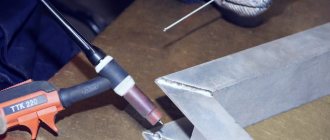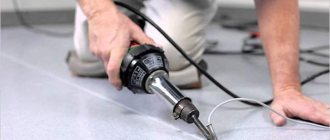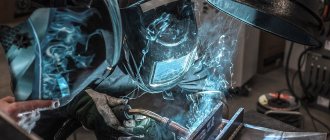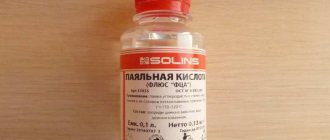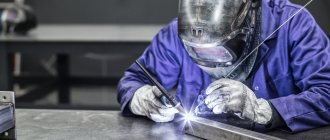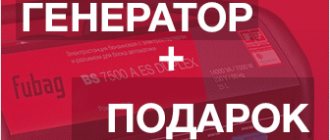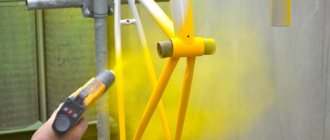As you know, aluminum is quite difficult to paint, this is due to the fact that its coating is very smooth. The more complex the surface structure, the rougher it is, and the larger the contact area with the material. This characteristic is called the pull-out strength of the connection. The problem of complex application of a protective composition to the surface can be solved in two ways, one of them involves rough grinding, while the other involves acid etching. The most common way to prepare the described surface for further decoration is to apply a primer.
Characteristics of VL-02
Primer for aluminum VL-02 is a mixture of domestic production and is manufactured according to state standards. It contains a base in the form of a suspension of zinc crown and an acid diluent. The first ingredient is a yellow anti-corrosion pigment, thanks to which the primer gains adhesion to difficult surfaces. Additional characteristics of the base include impact strength and elasticity. As for the acid diluent, it is an alcohol in an aqueous solution of phosphoric acid. It guarantees etching of the aluminum surface during processing.
How long to remove paint
During the factory painting, the aluminum alloy of the boat's hull was treated. As a result of this treatment, a clad (anodic) layer appeared. It is easy to distinguish, it has a yellowish color. The clad layer is designed to stop further aluminum oxidation. Primer and paint also adhere very well to this layer.
If this is possible, then it is advisable not to rip off the anode layer. But, usually, old boats that need painting have areas that have been worn down to metal, with a damaged clad (anodic) layer.
These bald spots will need to be sanded thoroughly.
Application Features
In order to use the above-described primer for aluminum, it must be mixed and poured into an acid-resistant container, it can be a glass or polyethylene container. For 4 parts by weight of the base, add one part of the acid diluent. The resulting composition should be kept for half an hour, after which it must be mixed well. Aging is required for maximum dissolution of polyvinyl butyral in the alcohol base. It is resistant to water, oxygen, but not alcohol. The shelf life of such soil is 8 hours. This mixture is applied to the surface to be painted in a thin layer, which can range from 6 to 8 microns. You can use a brush or spray. The drying stage will take no more than an hour. You will have to pay approximately 110 rubles per kilogram of this composition.
Which primer and paint should I choose for aluminum?
In everyday life, products made of non-ferrous metals are very often found. Sometimes there is a need to update their appearance.
In this regard, the question arises: is it possible to paint the surfaces of non-ferrous metals? This is especially true for car enthusiasts who periodically update the aluminum parts of their car.
In order for the painting process to be correct and of high quality, a primer for aluminum is necessary. How to correctly recognize the right brands of primers, carry out the process of surface preparation and painting of aluminum parts?
What problems may arise
A misunderstanding that may arise when painting an aluminum surface is its excessive and perfect smoothness.
The fact is that the complex structure of the surface, which has roughness, increases adhesion. It is this fact that gives a high-quality result when applying paint.
All this is absolutely absent on the aluminum surface. In order to solve this problem, you need to do the following:
- Performing the rough grinding process manually or using a grinder.
- Acid etching, which is possible due to the instability of aluminum to aggressive agents.
Note that aluminum wins in this regard. When it comes to steel surfaces, this is where real problems arise. This material is strong and cannot be sanded particularly well. It is also resistant to acid etching.
In the video: aluminum primer.
Primer brand VL-02
We present one type of primer marked VL-02, which is manufactured according to all standards established in GOST 12707-77. Let's study all its properties in detail. Aluminum primer VL-02 is a two-component composition based on acid thinners. We list the components that are used for the primer base:
- Zinc Crown Concentration is a yellow pigmented substance with anti-corrosion properties.
- Synthetic polymer polyvinyl butyral - is formed as a result of the interaction of butyraldehydes and polyvinyl alcohol. Thanks to this composition, the primer acquires high adhesion to the surface of non-ferrous metals. Moreover, after applying the paint it will be resistant to mechanical stress.
- Acidic additives that dissolve the surface are alcohol-water solutions with orthophosphoric acid.
How to apply VL-02 correctly
If the primer for aluminum is not applied according to technology, you cannot vouch for the quality of the work performed. Here is the procedure for performing priming work:
- Before use, the soil must be thoroughly mixed and poured into a container designed for acidic compounds, preferably glass.
- Next, combine the composition with an acid diluent in a ratio of 4:1.
- After waiting for up to half an hour, everything is thoroughly mixed again. It is necessary to stand to allow complete dissolution of the solutions. When diluted, the shelf life of the composition is up to 8 hours.
- After this, the composition is applied to the surface in a thin layer. Application can be done using a brush or spray. After finishing the work, leave it to dry. It usually takes about an hour.
BODY brand primer
An alternative to the domestic primer is the primer from BODY. And there are several options:
- primer for non-ferrous metals BODY 969;
- aerosol acid etching primer BODY.
Suitable types of paints
In addition to using the correct primer, it is necessary to select a coloring composition. Both materials must be suitable for each other in composition. Otherwise, you may get unpleasant surprises.
Let's consider several options during which the process of painting objects that function in harsh conditions is implemented. For example, painting car rims, motor boats and aluminum boats.
It's no secret that there are paints that have different bases. Let's try to figure out how they behave when painting an aluminum surface.
Alkyd-based compositions
For finishing application on the aluminum surface, alkyd-based paint PF-115 is used. It has the following characteristics:
- high degree of adhesion to non-ferrous metals;
- resistance to any kind of climatic conditions;
- inertness to the effects of fuels and lubricants.
Coverage is achieved by applying two layers of primer and two layers of enamel. Be sure to let each layer dry thoroughly, only then apply the next one. After applying the last layer, the paint dries from 24 hours to 3 days. It depends on the condition of the enamel and its consistency.
Important! To speed up the drying process of the enamel, it is diluted with white spirit or solvent before application. You can also practice the method of heating the surface to 40–450C.
Perchlorovinyl coloring compounds
These are paints that are used for finishing application on aluminum surfaces. Among them are the products XB-16 and XB-124. These compositions are made on the basis of glyphthalic and perchlorovinyl resins, which are characterized by the resistance of pigments to exposure to light.
After the paint dries, it has the following properties:
- It has a high degree of resistance to moisture and can be kept in water for a long time. Ideal for aluminum boats.
- To some extent, it is able to withstand short contact with aggressive environments.
It should be applied using the same technology: two layers of primer plus two layers of coloring composition. The layers are dried for up to two hours at room temperature. To speed up the process almost twice, the temperature is brought to 600C.
At the same time, the strength of the coating will increase. You can't overdo it with heating. If the temperature reaches 800C, the composition will split. During this process, hydrogen chloride will be released, which is toxic.
Epoxy based enamels
Among epoxy-based enamels, a product of the EP-140 brand is suitable for coating aluminum parts. This is a two-component paint containing an epoxy base and a hardener. Inorganic mineral pigments or aluminum powder can be added to its composition before application.
It is necessary to mix the coloring matter with pigments immediately before use. In principle, the paint retains its properties for up to three days, but if aluminum powder was used, then it must be used within 4 hours.
Application is carried out using the same technology: two layers of primer, two layers of coloring composition. You can use an aerosol or spray, or use a paint brush. Don't forget to dry each layer.
There are many other options. In particular, HB BODY aerosol primer for aluminum surfaces is widely recommended in automotive stores.
Alternative primers
As mentioned above, primer and paint are two components that must fit together. But, since enamels are applied to a primer composition, we select them according to the principle of matching the primer for an aluminum surface.
The range of primers is quite wide, in addition to those considered, the following can be noted:
- VL-08
- GF-031
- zinc-based white;
- EP-51.
When choosing paints and varnishes, we advise you to purchase products from already proven companies. The compositions of such companies as Tikkurila, Hempel, Dukeson, Body and others have proven themselves well. Also, when choosing, always try to read the certificate, which displays all the necessary characteristics.
Painting old coatings
What to do if aluminum parts have already been painted previously and require a painting process again. Here is a step-by-step algorithm of actions in this case:
- We determine the condition of the old coating. There is no need to remove old enamel unless it is flaking and is of the same type as the new paint material.
- Otherwise, the old paint should be removed with any organic remover. To begin with, the substance is applied to the painted surface and left for 20-30 minutes. To improve the effect, you can cover the surface with polyethylene. The softened paint is removed using a plastic or wooden spatula.
So, painting aluminum surfaces is possible. You just need to approach the choice of materials responsibly.
Features of Nerzhalux soil
If you choose a primer for aluminum, you may prefer Nerzhalux, which is an acrylic adhesive mixture for non-ferrous metals and aluminum. Among its characteristics:
- reliable adhesion with the finishing coating;
- water resistance;
- weather resistance;
- increased adhesion to metals;
- short drying phase.
Using Nerzhalux you can coat not only aluminum, but also galvanized surfaces, as well as aluminum alloys. This one-component primer is intended for ferrous and non-ferrous metals based on modified acrylic copolymers. The mixture is used for the preliminary preparation of products made of stainless and carbon steel, magnesium, aluminum, galvanized and titanium surfaces. This primer for aluminum is able to provide adhesion strength to materials, resistance to water and steam, lubricants, mineral oils, sea water, kerosene, gasoline and other petroleum products. The mixture will also help in cases where the surface is exposed to aggressive gases, salts, solutions of acids and alkalis during operation. This acrylic composition is used to obtain comprehensive anti-corrosion protection of the bases of building structures, which include:
- galvanized roofs;
- metal coatings;
- domes;
- hangars;
- galvanized profile;
- gutters;
- machine parts and other metal products.
Painting an aluminum boat with high quality and for a long time
› Paint › Working with paint ›
Painting a boat, as well as its ongoing repairs, are mandatory attributes of the annual maintenance of the boat. They make it possible to maintain the vessel in working order throughout the summer season and bring its external shape into a decent aesthetic appearance, including updating the license plates assigned to the boat by the State Inspectorate for Small Boats.
The choice of paint and means of preliminary preparation of the body depends on the material from which it is made. The most common materials for making boats today are fiberglass and aluminum alloys. In both versions, oil-based enamels and primers that are resistant to aquatic environments are used for painting.
Nitro paints are quickly destroyed by water, so they are not used for finishing boats.
Aluminum in the boat hull is presented in the form of flat sheets riveted together with rivets made of the same metal.
The most common small vessels of this type in the USSR were boats of the Dnepr, Progress, Kazanka and Ob series.
The engine in the first of them was a stationary motor from a Moskvich car, the others used outboard motors of the Vikhr, Moskva and Veterok types.
What paints can be used to paint a boat?
Paint for an aluminum boat is selected based on several factors affecting its hull. These include:
- intensity of vessel operation;
- the likelihood of mechanical damage to the bottom (for example, rocky bottom);
- chemical composition of water (salt, fresh);
- biological activity of microflora in a reservoir (fouling of the bottom with shells and silt, especially if there are scratches and dents there).
To avoid damage to the aluminum boat hull and extend its service life, it is recommended to use the following painting materials:
- Two-component polyurethane color. The coating made from it is the most durable and lasts for many years. To distribute the paint evenly, the coating is applied using a spray gun at an air temperature of at least 20-25 degrees Celsius and in the absence of humidity.
- Alkyd enamel. Its properties are similar to polyurethane paint. The only difference is the slightly greater fluidity of the material. This allows it to be applied to the board with a simple brush. The requirements for ambient temperature and humidity are also not so strict. Used for painting yachts and speed boats.
- Epoxy resin. Practically does not allow moisture to pass through. It is mainly used to protect and seal the bottom of the boat, even if there is through damage in it. The tightness and strength of the coating increases sharply when it impregnates fiberglass, which is glued to the metal using resin mixed with aluminum powder and smoothed with a spatula.
- Eroding paint (“anti-fouling”). The composition is designed to create a protective layer on the surface of the base paint that prevents the fouling of the bottom by shells and mollusks in both fresh and water with a low concentration of salt. The coating is effective only at vessel speeds not exceeding thirty km/h. For large quantities, the paint is washed off with water.
Please note: Is it possible to apply water-based paint to oil-based paint?
Painting a boat must be preceded by preparing the surface to be painted. The operation consists of cleaning the body of old paint. This is the most time-consuming part of the work. However, the quality and durability of the paint layer depends on its thoroughness.
Boat painting process
Painting an aluminum boat is carried out in several stages. They are carried out in a certain sequence:
- All necessary materials for painting are purchased, including primer, enamel, sandpaper, solvent for the selected enamel, brushes, roller or spray gun (manual or electric).
- The boat is turned upside down and secured on the sides with wedges to ensure the hull remains stationary.
- The boat is mechanically cleaned of corrosion stains, oxides and peelings of old paint.
- The body is completely cleaned with waterproof sandpaper and water to a matte shine and degreased with a solvent.
- Using a brush, roller or spray gun, primer is applied to the cleaned metal. After the surface has completely dried, the boat is painted in two layers. Each layer must be thoroughly dried.
- Making a stencil from thick cardboard and applying the registration number to the right and left sides of the vessel with black paint.
The boat paint is applied last. For faster drying and polymerization of the material, it is advisable to carry out the finishing coating of the vessel at a temperature not lower than 20oC and an average humidity of not more than 65%. These figures roughly correspond to a warm summer day.
Preparing the boat for painting
Painting aluminum surfaces has its own characteristics. Paint will not adhere to a body surface that is not properly prepared. It will quickly crack and peel off the metal in large shreds. The reasons for poor adhesion of the paint layer to the body are as follows:
- The surface of the aluminum sheet is too smooth. Particles of enamel, when the boat is shaken on the waves, simply slide off it and fall off completely.
- When pure aluminum comes into contact with oxygen, the metal is covered with an extremely dense film of oxide with negligible adhesive properties. This prevents paints and varnishes from penetrating and adhering directly to the metal.
- The metal has a certain “greasy” feel to the touch, which leads to paint slipping off its surface. It arises due to the surface tension of aluminum molecules bonded to each other very firmly.
If boat paint is applied to such an unreliable base, it will not last long. The coating will begin to crumble at the first collision with serious waves. Thus, it is impossible to do without preparation for painting the ship’s hull.
Preparation for painting consists, first of all, in eliminating the above reasons, namely:
- Complete mechanical exposure of the metal surface, removing the old enamel covering it and creating small corrugations on the aluminum with abrasive materials, preventing paint from sliding on it.
- Covering the metal with a layer of phosphoric acid or zinc phosphate - chemical compounds that prevent the formation of oxides on it and, due to their rough structure, promote closer adhesion of aluminum to the paint.
- Rinse, wipe and thoroughly dry the body.
- Degreasing metal using acetone or other effective solvents. The operation is performed immediately before painting.
Important! When choosing a solvent for degreasing, it is wise to pay attention not only to its moderate cost and effectiveness in removing oil stains from metal, but also to the absence of toxic substances that can harm health.
Boat hull priming
The final preparation of the vessel for painting consists of covering it with primer.
The basis of this liquid composition is polymer resins and a solvent, the evaporation of which forms a thin layer of an adhesive polymer, specially designed for finishing coating and firmly holding the enamel on the metal.
Primer for ships with an aluminum hull is available in two versions: in the form of an aerosol and a two-component primer. The question of what to paint with depends on the owner of the boat. The comparative characteristics of the connections shown in the table can help him in his choice:
Pay attention to: How to wash watercolor paints
Boat hull painting
After carrying out a full cycle of preparation, starting with the purchase of materials, mechanical processing of the hull, degreasing, coating it with primer and choosing a day suitable for temperature and humidity, the final coating of the vessel with enamel begins.
If it is possible to carry out this work in a heated room equipped with an electric or pneumatic compressor, the process will be significantly simplified. As a last resort, you can paint the boat with a flat brush and a roller covered with fur fabric.
Painted parts in the form of a windshield frame, oars, other boat attributes, as well as the hull itself must be completely dried under natural conditions or forcibly using air heaters or powerful mercury lamps.
Without this, operation of the craft risks peeling off the paint coating.
How to paint the bottom of a boat
The bottom of a ship is its most vulnerable place.
Experience shows that fiberglass impregnated with epoxy resin mixed with aluminum powder is the best way to protect it from contact with a rocky bottom and various types of “sinks”.
The entire outer part of the bottom is covered with such fiberglass fabric. The durability of the coating is very high, the color is silver. If the boat owner needs some other color, he can cover the fiberglass with alkyd enamel of the desired color on top.
Conclusion
Every small boat owner should know how to paint a boat with their own hands. This is not a difficult matter, but it requires patience, and most importantly, love for your aluminum brainchild and recreation on the water.
Painting an aluminum boat with high quality and for a long time Link to main publication
Method of use
Before using the Nerzhalux primer, mix well until smooth. Application must be carried out on a dry surface that has previously been cleaned of rust, dust, dirt and oils. If there is rust on the surface, it should be cleaned to Sa 21/2 using the abrasive blast cleaning method. Application can be done using a roller, brush, airless spray or air tool. If necessary, the primer can be diluted to working viscosity, using solvents R-648 or R-5A.
Do I need to remove the old coating?
If the paint is practically intact , and you want to repaint the boat yourself or renew the old paint, then there is no need to remove the coating.
It will be enough to treat the hull of the vessel with a three-dimensional Scotch Brite abrasive sponge. This sponge is used to rub surfaces for better adhesion of old and new paint.
The ideal option is not to remove the original paint and primer at all, just use Scotch Brite to matte the surface.
If only selective repairs are needed, then areas with damaged paint must be treated.
If the paint is very peeling , then more thorough preliminary preparation is required. There are two ways to pre-prepare an aluminum hull, which will depend on the overall condition of the boat:
- Wash.
- Cleaning up.
It is not recommended to remove paint by heating; the aluminum body can lead to damage!
Temperature
The above-described primer for aluminum for boats will dry to degree 3 within half an hour, but only if the room temperature is maintained within 20 °C. After drying at a temperature of 20 ° C, you can apply further layers of varnish and paint materials. It is necessary to use the soil in a temperature range from +5 to +30 ° C, while the room must have a relative air humidity that does not exceed 80%.
Painting of boats and boats made of aluminum | Technology and materials
The process of painting a boat , boat or yacht is significantly different from the process of painting any other product. An important point is what material the boat or boat is made of.
The choice of material for painting will directly depend on whether it is an aluminum boat or a boat with a plastic PVC side.
In this article we will reveal all the secrets of painting aluminum boats and boats, tell you about the technology for painting such products, select the necessary materials and consider all possible color options for such an expensive product.
Features of painting aluminum boats and boats
An aluminum boat, boat or any other watercraft made of aluminum has a number of advantages over the same products made of other materials. They have high strength, low weight, they are very easy to transport and launch, and therefore, thanks to these advantages, aluminum boats and boats are more popular.
In order to protect an aluminum boat from the aggressive effects of water and give it an attractive appearance for a long time, manufacturers of boats and boats use epoxy primer and polyurethane paint for aluminum to . In the painting system, epoxy primer perfectly protects the side of an aluminum boat, and polyurethane paint (in a glossy or matte version) perfectly emphasizes the beauty of the curves and gives its uniqueness to each model. It is important to understand that ordinary polyurethane enamels and epoxy primers in direct contact with water can lose interlayer adhesion (adhesion of paint layers to each other), so it is necessary to choose only high-quality and specialized materials for painting water transport .
The most important feature of painting an aluminum boat or boat is careful preparation for painting. Here, preparatory grinding and degreasing of the surface before painting plays a very important role.
It is the preparation of an aluminum boat for painting that gives an excellent coating result and eliminates the possible occurrence of problems with finishing coatings, especially if the boat is painted in unique, non-standard metallic or pearl colors.
Technology for preparing and painting an aluminum boat or boat
Since an aluminum boat is always in an aggressive environment (in the open air and on water) and aluminum has very high chemical activity, the coating of the boat should first of all have a protective function and, secondly, a decorative one. Based on this, a painting system for aluminum boats was developed, which has the following formula:
Epoxy primer (2 layers) + Polyurethane enamel (glossy / matte)
Using such a painting system , an aluminum boat is no longer susceptible to oxidation and acquires a rich, beautiful color in a pastel or metallic version.
Preparing the boat for painting must be done very carefully. Pre-grinding is done with abrasive paper with P120 grit. Surface degreasing must be done only with high-quality products from trusted manufacturers.
Materials for preparing and painting an aluminum boat or boat
Choosing the right materials for painting an aluminum boat is the key to future painting success. Today on the market there are many primers and enamels for aluminum made in Russia and abroad.
Manufacturers such as AKZO NOBEL (International SeaLine), Tikkurila, MOBIHEL, Hempel, DUXON, SEALINE and many others offer special compounds for boats and boats.
Among the well-known domestic paintwork materials for painting aluminum boats, the following options are considered: alkyd enamels XV-124 and primers FL-03K, VL-02, VL-023, as well as enamels of the GF and PF series.
When choosing a material for painting, the criteria for comparison will be such characteristics as composition, durability, possible color palette, material consumption per 1 square meter. meter and, accordingly, the price of the product.
Proven system for painting aluminum boats with professional paints and varnishes LECHLER and ALCEA
Thanks to the experience and skills of technical specialists, a special system for painting aluminum boats with professional paints and varnishes LECHLER and ALCEA was developed, which was tested on many models of boats and aluminum boats in the harsh climatic conditions of Russia and the waters of the Gulf of Finland.
The painting system for aluminum boats from LECHLER is as follows:
Painting cycle for aluminum boats from ALCEA:
These painting cycles for boats and boats made of aluminum are developed taking into account the basic needs of manufacturers and the needs of future owners of such an expensive product.
The described
painting systems do not require the use of additional layers of varnish and intermediate sanding, which greatly simplifies painting and reduces the time for producing one boat without losing the quality of the finished paintwork.
Polyurethane enamels ALCEA and LECHLER have very high elasticity, which prevents chipping on the surface of an aluminum boat. These enamels combine very high strength, good elasticity, good interlayer adhesion and an excellent uniform appearance of the finished paint coating.
These systems can be used both in production and at home if you have the necessary equipment and a painting chamber.
Colors for painting aluminum boats and boats
Of course, in addition to the technical characteristics of the paint coating , the owners of boats and yachts will always be interested in their aesthetic appearance, which is why manufacturers often come up with unusual options for painting the side and interior decoration of the boat.
In the line of paint manufacturers such as LECHLER and ALCEA, there are all kinds of shade options for painting aluminum boats and yachts. For example, the boat's finish can be pastel, with a shiny metallic effect, or with sparkling mother-of-pearl.
An important point is that previously spectacular colors ( metallics and pearlescents) could only be produced using acrylic paints or in an automotive painting system (varnish base) and these materials could not be used for painting aluminum boats and boats, since they did not have the necessary properties, but today this problem has been solved and an aluminum boat can be painted in any spectacular colors such as xerallic, mother-of-pearl or metallic.
Today, there are a lot of for painting a boat, boat or yacht made of aluminum
Before painting a boat yourself or when developing a painting cycle for aluminum boats in production, it is always necessary to obtain advice from technical specialists in the sale and implementation of paintwork materials.
This will allow you to avoid possible problems with the adhesion of materials, problems with the finished paint coating and problems with the further operation of such an expensive product as an aluminum boat or yacht.
Still have questions? We are always ready to help you with the choice of materials and painting system, ready to answer your questions and conduct a free consultation by calling 8-800-1000-175 (calls within the Russian Federation are free).
- ICS Administrator
- September 16, 2019
carries out comprehensive supplies of paints and varnishes to facilities, factories and enterprises in all regions of the Russian Federation and Kazakhstan.
Supply of paints and varnishes to the regions
The geography of supplies of professional paint and varnish products is not limited only to the Northwestern Federal District. Comprehensive work with all regions of the Russian Federation is due to the great demand for high-quality industrial coatings in various market segments.
Working directly with European manufacturers of paints and varnishes, we can provide the most favorable terms of delivery, after-sales technical support and individual selection of painting systems for any metal and plastic products, based on the capabilities and needs of customers.
The supply of complete painting systems includes:
- analysis of technical specifications;
- selection of the optimal painting system for products from preparation to final painting;
- selection of color solutions, development of individual color lines;
- consultations on the selection of painting equipment;
- delivery of products to sites in the shortest possible time;
- provision of technical sheets and certificates for all supplied materials;
- after-sales technical support.
*if necessary, technical specialists travel free of charge to any city and region of the Russian Federation to select painting systems directly at production sites. It is also possible to install painting and tinting equipment free of charge at customer enterprises.
The supply of paint and varnish products to the regions is no different from cooperation with companies in the North-West region. wants to make the work of regional customers as easy as possible by organizing free delivery, consultations according to the customer’s time zone and installing free tinting equipment at enterprises in the regions.
How to submit an application for the supply of paints and varnishes to the regions
Our main goal is to provide the most effective solutions for working in your production conditions with minimal costs and high quality of the finished paint coating.
We work with absolutely all segments of the industrial market where professional paint and varnish coatings are required, from decorative works to durable anti-corrosion coatings of class C1-C5 with ISO certification.
To obtain advice, fill out a purchase order and receive technical support, you can contact us by toll-free number 8-800-1000-175 (free for ALL REGIONS of the Russian Federation) or by mail [email protected]
- ICS Administrator
- August 9, 2019
Since July 2022, it has been providing a new service - refilling professional industrial paint for metal and plastic into aerosol cans.
- ICS Administrator
- May 30, 2019
Metal, like any other building material, needs to be protected and its aesthetic characteristics improved.
The most vulnerable metal products are those that are outdoors. They are constantly in contact with moisture and are exposed to aggressive climatic influences.
If
the metal is poorly protected from these negative factors, the product very quickly becomes unusable, oxidizes and collapses.
To avoid such situations, specialized metal paints for exterior use .
- ICS Administrator
- April 3, 2019
Gelcoat (
gelcoat
) is a composition that resembles a gel in consistency.
The scope of application of gelcoats is extensive, but in general it comes down to the creation of protective and decorative coatings on composite products.
- ICS Administrator
- December 18, 2018
Just like parts made of any kind of material, parts made of plastic need continuous protection. One of the most important points when painting plastic is strict adherence to preparation and painting and the gradual application of paint and varnish material to the plastic surface.
The technological stages of preparing and painting plastic parts, as well as the stages of painting a metal surface, have their own clear functional purposes:
- ICS Administrator
- November 12, 2018
Consumption and precautions
Before purchasing a primer, it is important to familiarize yourself with the composition consumption, which can vary from 80 to 120 g/m2; this is true if the thickness of one layer is equal to the limit from 8 to 15 microns. Professionals advise applying about 2 layers. On sale you can find this primer, which is presented in a yellow base color. It is important to take precautions when applying this primer. When carrying out internal work and after its completion, it is necessary to ventilate the room, and in the process of applying the mixture, you must use personal protective equipment. The cost of one kilogram of such primer is 233 rubles.
Description of Body 960 Wash Primer
This primer for aluminum (aerosol) is easier to use. For example, Body 960 Wash Primer is sold in different packaging, including in aerosol form. The mixture is a high-quality anti-corrosion acid-curing primer, which is made on a polyvinyl butyl base. It can be mixed with an activator and is intended for complete and local use. With its help, you can pickle rust and prevent it from spreading further. This mixture has the quality of high adhesion to non-ferrous metals. After completion of the drying phase, it guarantees anti-corrosion protection of the surface. The applied layer dries in 10 minutes, after which the base does not require sanding and can be painted with any two-component mixtures. Using this primer, you can protect aluminum from salt, moisture, and also give the surface characteristics of resistance to atmospheric, mechanical and chemical influences.
Primer for aluminum: selection, use and application
16.08.2018
Any metal parts, including aluminum, need priming before painting. Without primer, paints and varnishes adhere very poorly and quickly begin to peel and fall off the surface.
To maximize the life of the paint, a special primer for aluminum should be used.
This article will discuss the stages of preparing a metal surface, characteristics, types of primers, and the technology for applying different primer solutions.
How to properly prepare aluminum
In order for varnishes or paints to adhere perfectly to aluminum and adhere firmly to it, the base must be properly prepared before using a primer.
When manufacturing aluminum parts at a factory, preparing this metal is a complex process, but even at home you can prepare aluminum well.
Before using aluminum primer for painting, the following preparations must be completed:
- Clean the surface mechanically. It is very important to remove dust, dirt, old paint and oxide film from the metal. The best tool for this cleaning is a sandblaster, but if you don't have one, you can use coarse sandpaper, a coarse file, or a sander with a special protective disc. Aluminum needs to be cleaned to a shine.
- The base is degreased and etched. These procedures are needed to remove a continuous oxide layer, greasy, oil stains from a metal surface. Degreasing is carried out using alcohol, acetone or solvent. After this, small aluminum products can be dipped briefly into a plastic container in which phosphoric acid and water have previously been diluted. Large parts or structures must be coated with the same orthophosphorus solution using a brush or foam rubber. This procedure must be performed strictly with rubber gloves, thick clothing and goggles.
- Creating a conversion layer. At home, such a layer can be created using zinc phosphate, which is applied to purified aluminum. Zinc phosphate does not undergo a corrosive process; it has a rough structure, so it is very suitable for smooth aluminum parts, providing a high rate of adhesion of the base to the paint and varnish material applied after priming.
- Washing and drying. It is necessary to rinse the base to completely remove chemicals from it that would interfere with the application of the primer. After washing under running water, the product is dried either using a hair dryer or in the open air.
- Applying primer. At this stage, the primer is applied in one or more layers. When the primer dries, the base will be covered with a polarized protective layer, which will become an excellent base for applying paint and varnish material.
Attention! Typically, primer for aluminum contains harmful and toxic components that have a detrimental effect on human health. To be on the safe side, the primer should be applied to the aluminum either in a very well ventilated room or outdoors. It is important to use personal protective equipment such as gloves, goggles and a respirator.
Types of primers for aluminum
Nowadays, two types of primer are used to prepare aluminum for painting.
- Aerosol primer for aluminum. This primer is supplied in cans; the aerosol is acid-free and is most often used for treating small aluminum products. It covers, for example, bicycle frames, car rims, etc. This type of primer is very easy to use; it can be used in the garage and even on the balcony. The primer is completely ready for use, dries in a couple of hours, but does not have high resistance to mechanical stress. Primers are sold in the form of aerosols in car dealerships and construction hypermarkets. When choosing such a primer, you need to look at the packaging; it should indicate “Primer for Aluminum” or “Alu Primer”. It is best if the composition contains zinc powder, in which case the package will be marked “Zn”. When choosing, you need to look at the production date and expiration date.
- A two-component primer for application on aluminum is used to protect automobile bodies, aluminum boats, boats, and other products with a large area. One of the popular and effective two-component compositions is primer for aluminum VL 02. Two-component primers must be prepared in small portions. The prepared mixture must be applied no more than 6 hours in advance; it dries on the surface in about a day. After drying, a protective film is formed that has excellent mechanical strength and high corrosion resistance. The two-component primer includes an acid thinner and a base. The base contains polymer resins and zinc powder, which creates a conversion adhesive layer. The primer thinner VL-02 consists of special alcohol for degreasing the base and phosphoric acid, for etching aluminum and creating a phosphating protective layer.
Primer application process
Depending on the type of primer, the technology for its application will differ.
A unique product for repairing leather products! just apply...
- The primer in the form of an aerosol is applied to a previously cleaned surface. Before applying the primer, the base is cleaned to a shine using sandpaper. Grease stains are removed with a rag soaked in alcohol or solvent. As soon as the base is completely cleaned, you should immediately begin applying a primer to prevent an oxide film from appearing. The can is shaken several times, after which a jet of soil is applied from a distance of 20-25 centimeters, at an angle of 90 degrees to the surface. To avoid drips, the spray head must be constantly moved, without stopping in one place. Half an hour after the applied layer has dried, it is advisable to cover it with another layer. This primer dries completely in about 2 hours, after which it can be painted.
- Two-component primers are prepared in a plastic container that is resistant to acid. A container of about one liter is sufficient; the base and thinner are mixed in it in a ratio of 4 to 1. The mixed primer is left for half an hour, after which the solution is mixed and applied to the previously cleaned base.
The process of applying two-component primer is best done with a pneumatic spray gun, but you can use a regular foam roller. It is advisable to apply two layers, the second layer is applied after the first has completely dried. When the soil is dry, the product can begin to be painted.
Which primer should I choose for aluminum? Link to main publication

